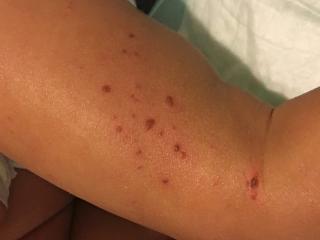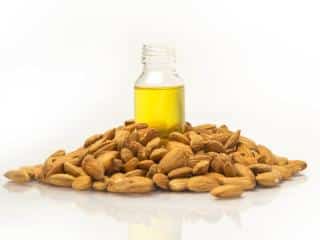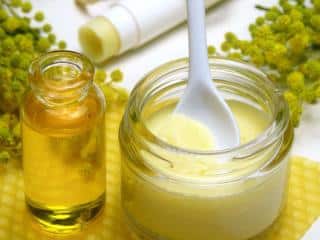

A common ailment that impacts skin, dermatitis can appear on newborns (when from a family with a history of allergy), teenagers and on adults.
Over the past 3 decades, in developed countries, there has been a 3-fold increase in sanitary measures taken against the dermatitis epidemic as compared to previous decades. This is the same increase as the trend for allergy.
Today, about 1 in 5 children under the age of 7 and 18% of those between 7 and 16 experience this particular form of itch-inducing dermatosis.
For example, in France, this skin disease now impacts 20% of all children, compared to between 3 and 5% thirty years ago.
Often occurring in connection with asthma or other types of allergic reactions, dermatitis appears to result from a genetic and environmental disruption.
Today, dermatitis is the cause for 30% of all doctor consultations in the field of dermatology, and impacts 2 to 10% of all adults.
What is done to deal with this kind of ailment? Is it possible to soothe it with plants? The following lines will provide the answer…
Definition of dermatitis or eczema

There are 2 types of dermatitis: contact dermatitis and atopic dermatitis. But what causes them?
There appears to be several possible causes leading to dermatitis:
– Contact dermatitis
Usually impacting adults, contact dermatitis appears after having touched specific metals – think fantasy jewelry – or chemical products such as detergents, rubber, cosmetics, band-aids…
The symptoms of contact dermatitis are usually described by the patient as including red patches followed by itchiness and blisters usually matching the portion of the skin that was set in contact with the allergy-triggering substance.
– Atopic dermatitis or eczema
In some cases, such as in nursing babies, experts trace the cause of atopic dermatitis back to a change in diet, often whenever the mother doesn’t prioritize natural breast-feeding.
Additionally, there may be an influence of being prematurely exposed to food allergens.
Indeed, it has been shown that feeding a newborn exclusively with breastmilk for the first 3 months results in significantly reduced occurrence of atopic dermatitis.
Note that this particular type of dermatitis seems to result from genetic causes because 70% of identical twins both develop this affliction and 50 to 70% of parents of impacted children also experienced it.
As for what regards environmental influence, things like allergens, stress and sun are usually strongly related to dermatitis symptoms.
Indeed, after an allergic reaction has been triggered after exposure to innocuous allergens such as pollen, dust or animal hairs, the patient’s body shows dry, rough, red patches. These are usually located on the cheeks, behind the ears, on the scalp, forehead, groin, torso, folds of the knees, wrists, face and underarms. These wounds can produce fluids and form crusts.
Aside from stress, UV rays may trigger an allergic reaction. This is called photo-sensitive dermatitis.
Sometimes, ingesting certain types of medicine and being exposed to the sun’s rays may trigger bouts of dermatitis.
In herbal medicine, certain plants have long been known for their health benefits.
Regarding dermatitis, the following are the most potent:
> Oats
Oat seeds have itch-soothing and anti-pruritic properties.
Indeed, these grains help fight off the itchiness.
It’s recommended to use them externally, as a decoction that would be added to bath water.
> Sweet almond

To alleviate dermatitis, also use it externally. Massage oil prepared from sweet almond oil is sure to be very effective for patients suffering from this particular skin ailment.
> Chamomile
A beneficial plant that is much appreciated by those who love infusions, chamomile is known for its moisturizing, anti-inflammatory and anti-pruritic properties. To soothe this skin condition, it is recommended to apply it externally, as an essential oil (2 drops added to any other plant-based oil) or as a cream. It’s also possible to soak a compress with chamomile infusion water and apply it on the part of the body that needs it.
> Shea butter and/or coconut oil

It also contributes to the healing of derma wounds.
> Suncup
Also called the “evening primrose”, this plant is often used in organic beauty products. As an anti-inflammatory agent, it helps restore softness to damaged portions of the epidermis. It’s used in the form of oil, either externally or internally in the form of capsules to ingest.
> Borage
Much appreciated for its anti-inflammatory, anti-pruritic, relaxing and wound-healing properties, borage oil is to be used to massage the parts of the skin that are afflicted. Borage can also be used internally in the form of capsules. 1 dose taken 1 to 2 times a day before meals is what experts recommend.
> French green clay
Clearly a powerful anti-inflammatory, French green clay is also known for its emollient and wound-healing activity. It can be applied directly on the afflicted portions of the skin. It’s also a good idea to wrap it in a swath of gauze or natural-fiber cloth before applying it to the portion of the body that must be treated.
> Marigolds (Calendula specifically)
Its wound-healing activity and anti-inflammatory, relaxing and regenerative properties make this medicinal herb one of the top favorites in Herbalism and cosmetics. As a paste or steeped infusion compress used externally, Calendula marigold effectiveness needs not be proven any further.
Healing with plants is one thing, but doing so while ensuring that a specialist is following you up is even better.
Feel free to ask a herbalist, pharmacist or, better yet, your consulting physician for advice.
A staunch medical opinion is always welcome, especially if symptoms persist.
→ Often correlated: 5 plants to reduce pollen allergies